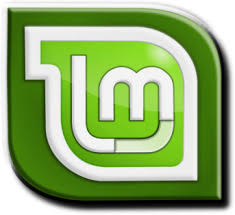


Linux is a Unix based computer operating system software assembled and developed under the open source system of software distribution and development. At the heart of this operating system is the Linux kernel upon which Linux distributions are based upon.
Ubuntu is one of the most prominent of the Ubuntu distros. Based on the Debian distribution, it has been one of the most downloaded operating systems mainly because it is easy to use, and the latest versions has a very beautifully designed and intuitive user interfaces, making it easy for inexperienced beginners to quickly get adapted to it. The Canonical User Interface Team of Ubuntu has shifted away from preexisting desktop interfaces that were associated with difficult navigation on Linux, to a simple interface that favors quick deployment of desktop applications and searching of existing applications, files and folders.
Ubuntu is also known for excellent hardware compatibility and ease of installation. This is due to the fact that Ubuntu has a very dedicated team of developers who quickly resolve issues associated with different hardware environments. Ubuntu's team of developers also seek to support new beginners by offering tips on easy installation. Another advantage of the Ubuntu operating system is the availability of a massive and fully centralized repository of very useful software for specialized needs. This software is neatly installed automatically as it downloads thus relieving the hassle that comes with software installation in major Linux systems.
Fedora is also an open source distro that is Debian Linux based offering quick, slick user interface. Like Ubuntu, Fedora operating system has a very good hardware support for many of the different types and variations of computer hardware. This is because Fedora, just like Ubuntu, has a great number of developer fans who fully endorse and tweak the free operating system to the needs of specific user or hardware configurations.
The developers at Fedora did not consider the use of their own user interface so Fedora 15 is bundled with a shell known as the gnome shell. The Gnome Shell is relatively harder to navigate than the Ubuntu's Unity Shell. The non overlapping windows might be hard to get used to especially if you are not an experienced Linux User. For a user leaving Windows, the Gnome Shell is utterly confusing but once a user is use to it, you will appreciate the slickness and the swiftness of finding software in the Gnome Shell. Transitioning from one window to another is usually animated but they suffer from stability especially in low graphics computers. This is also a problem that is experienced in Ubuntu operating system.
A draw back in Fedora is proprietary software is not fully supported. MP3 codecs, audio or video codecs, flash support software, network card drivers are mostly not supported. Fedora however has tried to get support for important and most commonly used audio and video codecs.
Despite draw backs, Fedora is a very good distro for experts and software developers. It allows the easy set up of a slick fast and efficient integrated development environments. Fedora unlike Ubuntu can be tweaked to the core so that you have an operating system that is unique and suits your tastes accordingly.
While the Fedora and Ubuntu Linux have continued to incorporate new user interfaces and completely reinvented how their user interfaces looks, Linux Mint has continued with the old but improved way of the Gnome environment. Linux Mint continues to be the number 1 most downloaded distro. This is because Linux mint continues to keep a familiar user interface and thus a loyal user base. Linux Mint like Ubuntu has a very large repository of its own software, with excellent hardware support. The support of proprietary software is also good with hardware drivers nicely catered for.
Linux mint is also great for beginners due to the fact that it uses a navigation that is much similar to Microsoft Windows Operating System. Thus former Windows users may find it easy to navigate. Another advantage for the beginner user is the ease of installation when it comes Linux Mint
There you have it...the Top 3 Desktop Linux Distro currently. My favorite of the three is by far Linux Mint!
To visit the distros websites for more information visit:
Ubuntu
Fedora
Linux Mint
